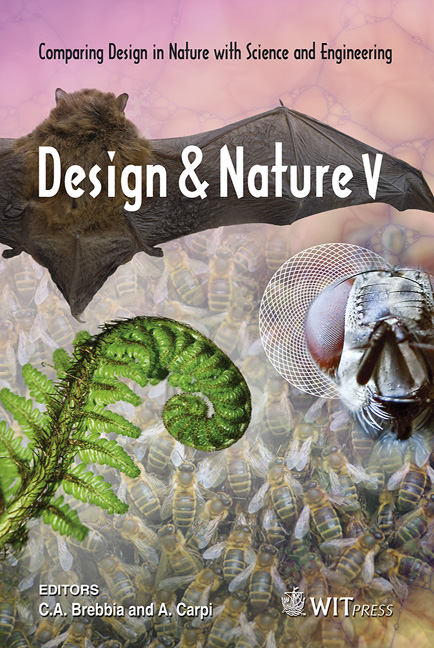Solutions From Nature For Building Envelope Thermoregulation
Price
Free (open access)
Transaction
Volume
138
Pages
12
Page Range
251 - 262
Published
2010
Size
3,733 kb
Paper DOI
10.2495/DN100221
Copyright
WIT Press
Author(s)
L. Badarnah, Y. Nachman Farchi & U. Knaack
Abstract
The building envelope has to maintain a thermal comfort for the occupants. Current technologies for buildings consider the envelope as a thermal barrier or a shield that has to be insulated to prevent heat loss and allow it to be open to dissipate heat if necessary. More efficient thermoregulation solutions can be found in nature. Organisms can manipulate their body temperature by behavioural or physiological means as an adaptive response to the environmental changes. In this paper we present performance taxonomy of organisms that facilitate thermoregulation in nature, and we discuss their possible application in building envelopes. Moreover, we present an application case of such taxonomy for an evaporative cooling system for building envelopes. Keywords: thermoregulation, building envelope, skin, sweating, cooling, heating, conduction, convection, radiation, evaporation. 1 Introduction One of the aims of the building envelope is to maintain a thermal comfort in the enclosed spaces occupied by people. Ventilation, cooling, heating, and solar radiation significantly influence the thermal comfort of a space. There are various developed technologies that manipulate these aspects by using a great deal of energy and time. In these technologies, the envelope is considered as a thermal barrier or a shield that has to be insulated to prevent heat loss and allow it to be open to dissipate heat if necessary. This way of conception limits more efficient solutions, where the building envelope is not considered as a barrier but as a medium.
Keywords
thermoregulation, building envelope, skin, sweating, cooling, heating, conduction, convection, radiation, evaporation





